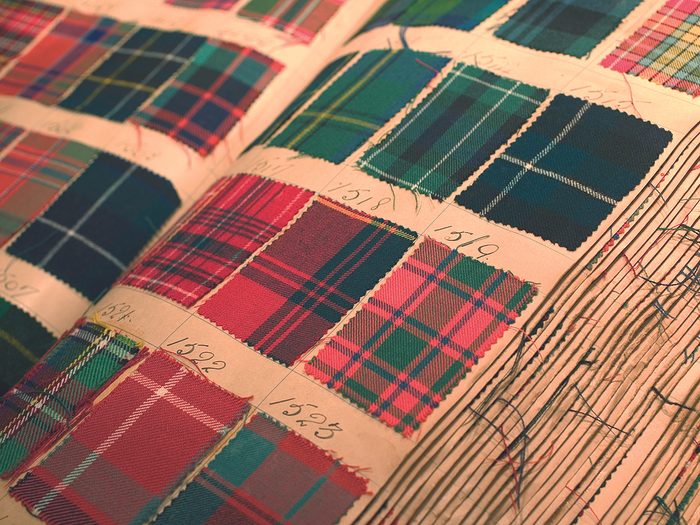
What is Tartan Day?
Tartan Day is an annual celebration of Scottish culture that takes place on April 6, the date on which the Declaration of Arbroath was signed in 1320 AD. Regarded as Scotland’s most iconic document, this declaration was actually a letter sent to the Pope by Scottish barons to recognize Scotland’s independence.
Although it’s (ironically) not a big deal in Scotland itself, Tartan Day has gained momentum in Canada, the U.S., Australia and New Zealand, as an opportunity for those with Scottish ancestry to show pride in their heritage. In Canada, Tartan Day took hold in Nova Scotia in the mid-1980s, with participants celebrating by wearing kilts outside of the home. Since then, each provincial government has made April 6 an official day of celebration.
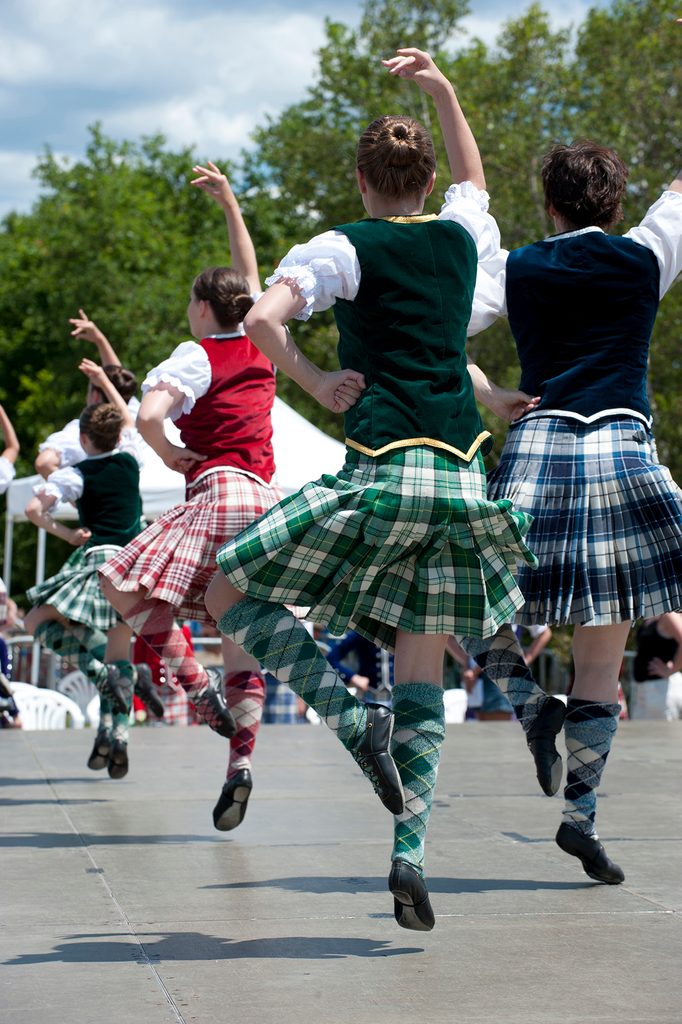
How to celebrate Tartan Day in Canada
Across Canada, Tartan Day is marked with concerts, dinners and Ceilidh dances. Pipers, drummers, Gaelic choirs and highland dancers head to Parliament Hill in Ottawa for a rousing public concert. Meanwhile, Scottish societies across Canada host events (including parades) that celebrate Scottish heritage and culture.
Discover 10 essential attractions on the east coast of Canada.
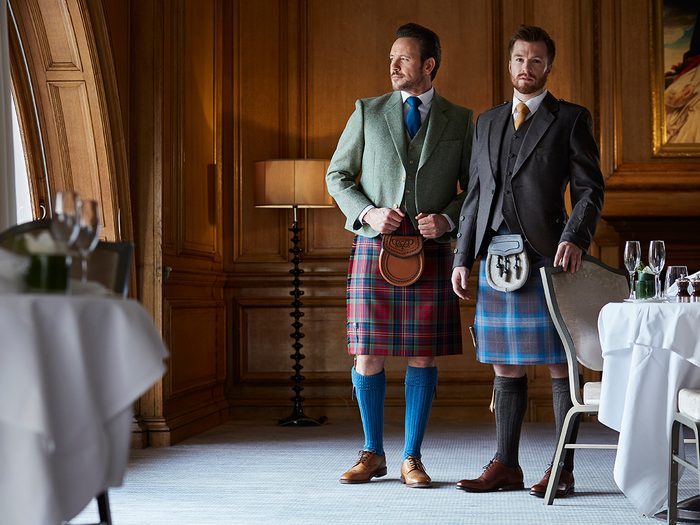
First came the kilt…
The kilt as we know it was first worn by Scottish Highlanders in the early 1500s. (The term “kilt” derives from the ancient Norse word kjilt, meaning pleated.) Made from sheep’s wool coloured with vegetable dye, the original checked patterns were known as “setts.” According to tartan historian Peter MacDonald, it wasn’t until the early 19th century that these setts evolved into the clan tartans we know today. “Prior to that, people wore what they liked, could afford, or was available,” he says. “The wealthier would have always worn the best quality, often with a like of red, produced with an expensive imported dyestuff.”
These great Canadian history podcasts are worth adding to your playlist.
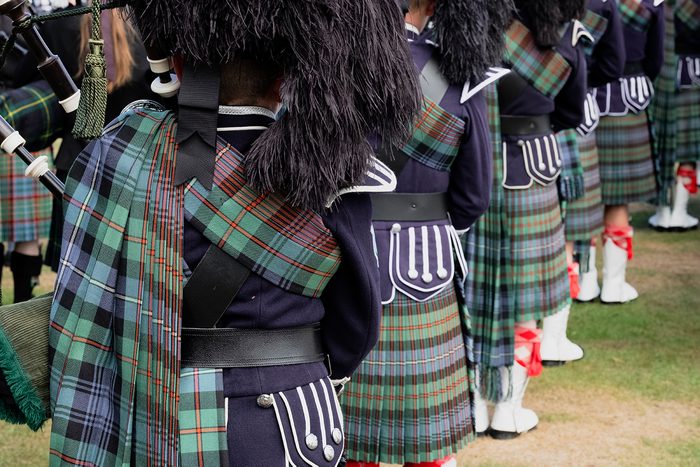
What do they really wear underneath those kilts?
While tradition dictates underwear isn’t worn under a man’s kilt, nowadays it’s a matter of personal preference. The practice seems to have originated from the Scottish military whose regiments wouldn’t wear underwear under their kilts. The custom rippled through society as soldiers returned home and the omission was noticed by friends and family. Those who don’t feel comfortable “going regimental” are welcome to don a pair of underwear.
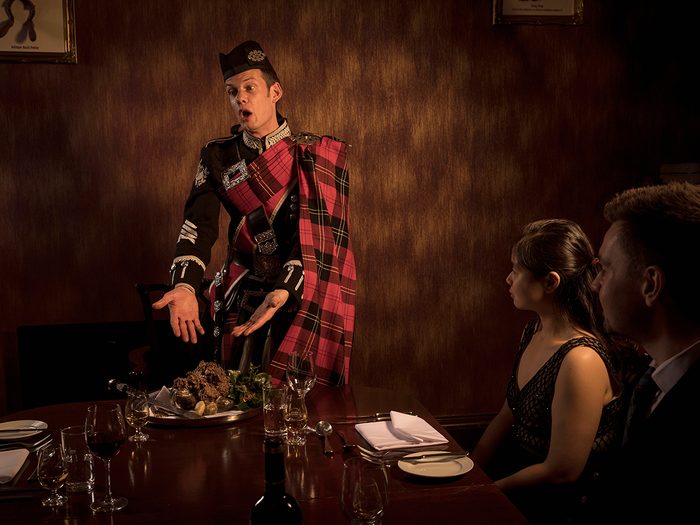
Tartan vs. plaid: What’s the difference?
While tartan and plaid are often used interchangeably in North America, there are distinct differences between the two. Technically, “tartan” is a piece of cloth; it becomes a “plaid” when it’s worn draped over the shoulder. Nowadays, a shoulder plaid, in matching tartan to the kilt, is a finishing touch to any formal Highland outfit.
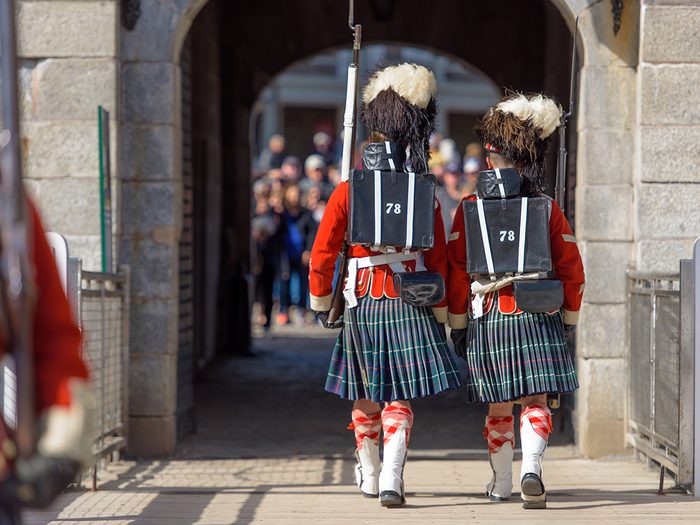
Tartan’s debut in Canada
Tartan became a familiar sight on Canadian soil long before Confederation, with the striking cloth being worn by the Scottish regiments serving garrison duty here in the 1700s. As the decades passed, the influx of Scottish immigrants spread tartan’s appeal—and influence—from coast to coast. Today, approximately 5-million Canadians claim Scottish heritage, making them the third largest ethnic group in the country, and tartan continues to pop up in everything from humble lumberjack flannel shirts to school uniforms.
Here are 10 historic landmarks every Canadian needs to visit.
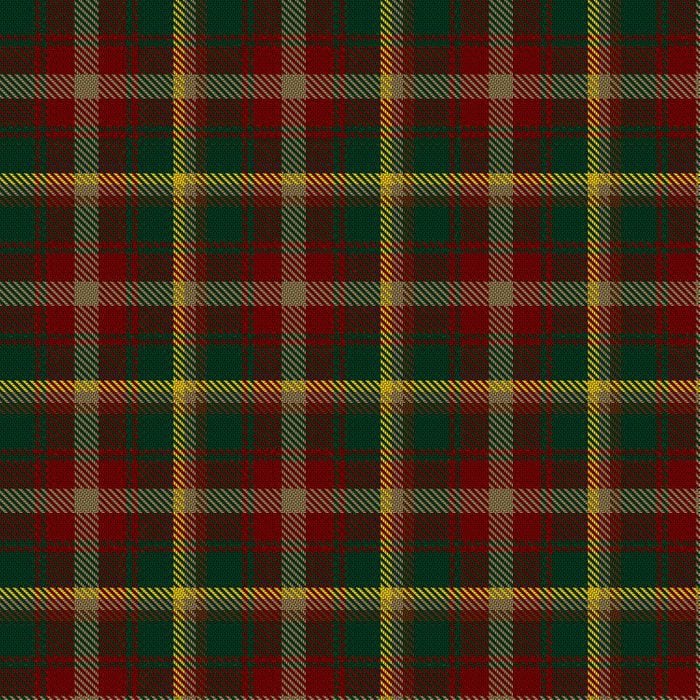
We have our own Canadian tartan
The Maple Leaf Tartan was declared the official Canadian tartan by Parliament in 2011. This asymmetric pattern was designed 1964 in anticipation of the 100th anniversary of Confederation in 1967. A visual expression of Scottish heritage and culture, Maple Leaf Tartan is rich in symbolism: its colours—deep green, gold, scarlet and brown—reflect the life cycle of the maple leaf. As an official symbol of Canada, the Maple Leaf Tartan joins Canada’s other significant emblems, such as our National Flag and Coat of Arms. Each Canadian province has their own tartan too, and with the exception of Quebec, Canada’s provincial and territorial tartans are all officially recognized and registered.
Find out how the provincial flowers of Canada were chosen.
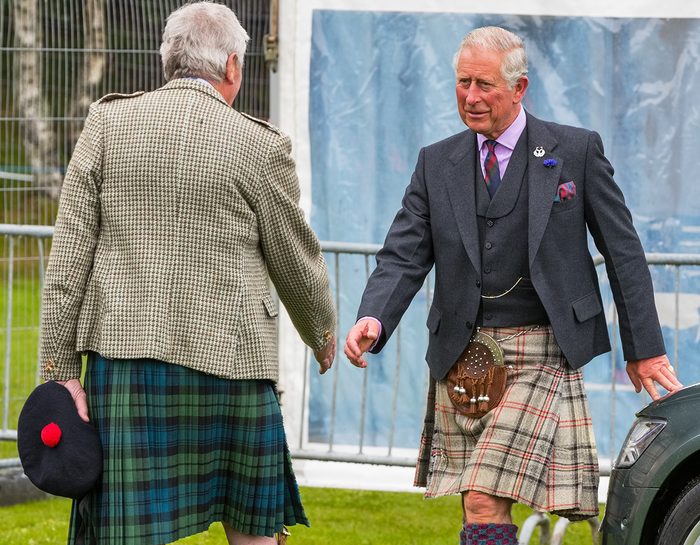
The Royal Family’s relationship with tartan
It was a momentous occasion when King George IV visited Scotland in 1822. He was the first British monarch to visit in over a century and as part of the pageantry, Highland Chiefs were encouraged to wear their clan tartans. What makes this so significant is that less than 100 years earlier, George IV’s ancestor George II imposed the Dress Act of 1746, which made any form of Highland dress illegal. Queen Victoria’s love of Highland dress helped to continue the popularity of tartan through the 19th century. More recently, the late Queen Elizabeth II’s affinity for Scotland was apparent with her frequent appearances in tartan and dressing the pageboys at her 1947 wedding in Royal Stewart kilts.
Take a look back at Queen Elizabeth’s incredible life.
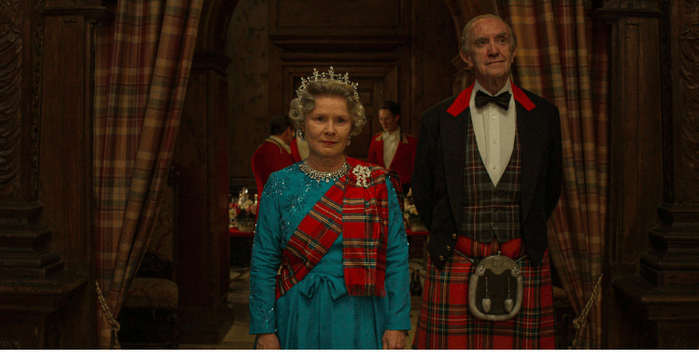
Why The Crown got the Balmoral Tartan wrong
Designed in 1857 by Prince Albert, husband of Queen Victoria, Balmoral Tartan was named after their castle and estate in Aberdeenshire, Scotland. This distinctive grey pattern is the private property of the Royal Family, and as such can only be worn in accordance with the monarch’s wishes. In fact, apart from the Royal Family, only The Piper to the Sovereign—King Charles’s personal piper who plays daily at nine in the morning—is authorized to wear it.
While the Netflix series The Crown goes to great lengths to accurately recreate outfits worn by the Royals, it’s no surprise the Sovereign didn’t grant the green light to Jonathan Pryce, who in playing Season Five’s Prince Philip, wears a grey tartan similar to (but distinct from) the official Balmoral Tartan.
Don’t miss our roundup of powerful quotes from The Crown.
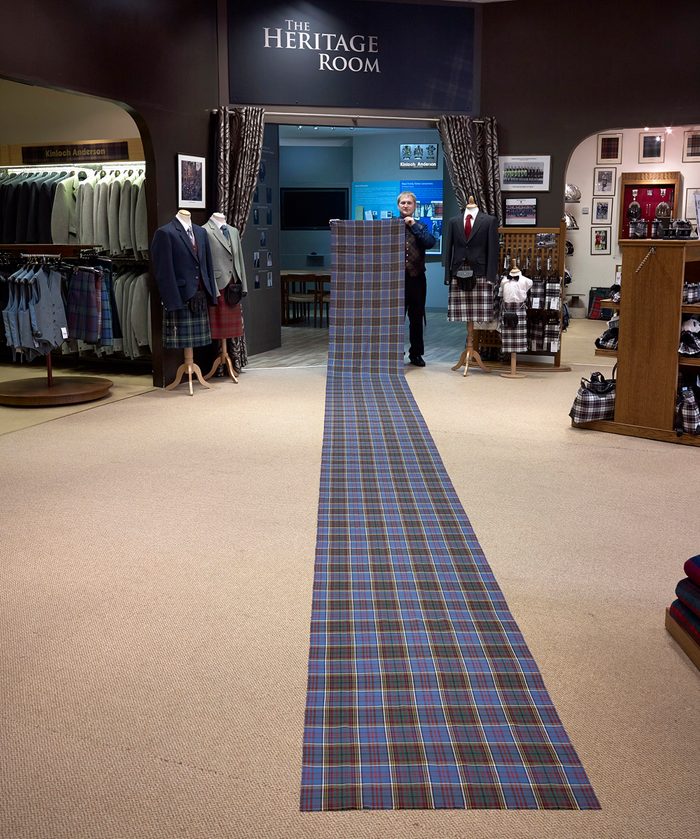
Exploring tartan’s roots in Scotland
Of course, there’s no better place to brush up on tartan’s fascinating history than Scotland itself.
Kilt-makers for today’s Royal Family, Kinloch Anderson, were first granted their Royal Warrant of Appointment in 1934 by King George VI. Visitors can suss out their mini-museum and sharp-looking shop (above) the next time they’re in Edinburgh.
To celebrate its fifth anniversary in 2023, Scotland’s design museum, the V&A Dundee, is showcasing a radical new look at Tartan with a flagship exhibition. Opening April 1, visitors can explore the incredible impact tartan has had on politics, fashion and design.
Planning a trip across the pond? Here are 50 London attractions worth adding to your itinerary.